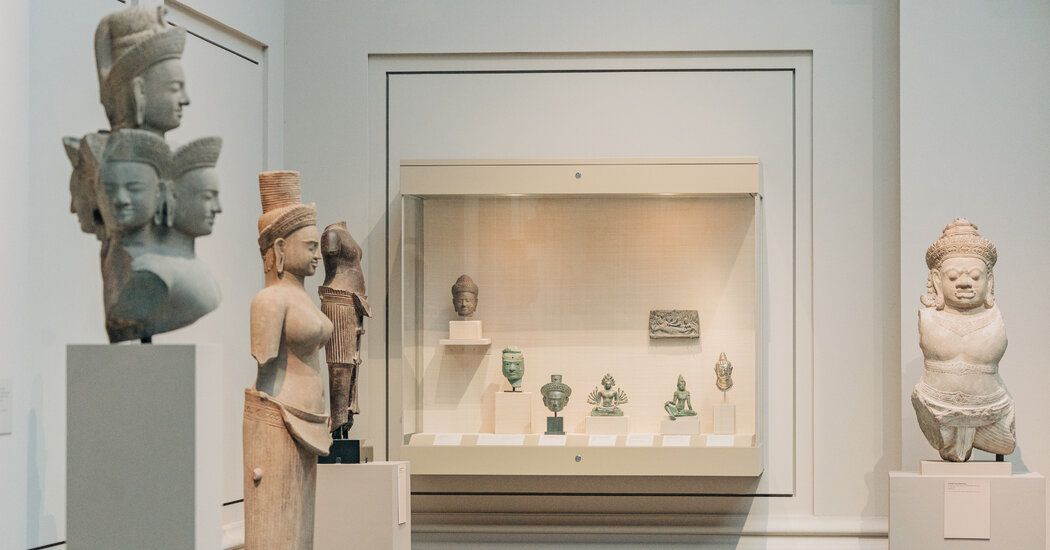After Seizures, the Met Sets a Plan to Scour Collections for Looted Art
“The attitude used to be, don’t acquire something you know to be stolen — that’s a very low standard,” said Maxwell Anderson, who has served as the director of institutions like the Whitney Museum of American Art and the Dallas Museum of Art. “The attitude today is, don’t acquire something unless you know it’s not stolen. It’s a 180-degree difference.”
Although rules were more strictly observed in later years, museum curators at times took a dealer’s word that objects had been obtained legally. Or museums found it difficult to confirm an artwork’s origins when, as in the case of Cambodia in the 1970s, foreign countries were in turmoil and there was no government to check with.
Cambodian officials have said in recent years that at least 45 artifacts at the Met were stolen from ancient sites in the country. The Met has recently removed several items from display in response, but it has refused to show Cambodian officials internal documents that might buttress, or undermine, the museum’s proper title to the objects. Instead, the Met has requested evidence from Cambodia demonstrating that the works were stolen.
The Met’s new approach comes as leading museums around the world are confronting similar challenges. The British Museum has been in talks with Greek officials, who have long sought the return of the Parthenon marbles. The Vatican announced last year that it would give fragments of the Parthenon that were long held in the Vatican Museum to the Greek Orthodox Church. German and U.S. museums have been returning Benin Bronzes to Nigeria.
Some critics want museums to do far more than simply ensure that ancient objects were not stolen. Even when no laws were broken, they want museums to place a greater emphasis on social justice, ensuring that objects were not obtained by exploiting societies weakened by poverty, colonialism, war or political instability — and to return them if they were.
Source: The New York Times


